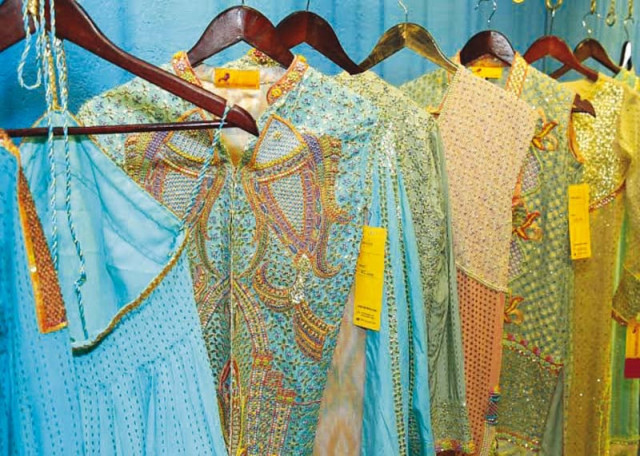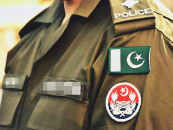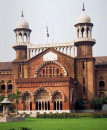A market that upcycles old wedding wear
The price starts from Rs 50 and can go up to as much as Rs 50,000 depending on the work

Made at the cost of a limb and a half, South Asian wedding wear is known for the heft of its intricate embroidery, handwork and ornamentation. But as exquisite as these elaborate attires are, one seldom finds the opportunity to utilise them beyond the wedding dates. As a result, more often than not, these expensive apparels spend the rest of their lives locked away as keepsake in a forgotten suitcase until they succumb to the test of time.
However, holding true to the saying that ‘one man’s trash is another man’s treasure,’ these tattered glad rags find a new life at Soha Bazaar in Lahore’s Shah Alam Market, where they are bought for their weight despite their frayed thread and stained fabric.
“We don’t care about the fabric here, we’re more interested in the gold, silver, brass and copper wires which have been used in the making of these elaborate garments,” said Muhammad Aslam, a shopkeeper at the market.
Can’t afford a Sabyasachi? You can now rent your bridal gown instead
According to Nazia, a woman who had come to the market to sell her old Lehanga, one can get a good price here for garments which are beyond repair but have heavy metal work.
“Although my lehanga has lost its ornaments and lusture and is unusable for me, it still has good quality Gota Kanari work which shopkeepers here are interested in.
You can get good money for old clothes here; garments embroidered with copper wire can sell for anywhere between Rs 200 to Rs 250 per tola while silver work can get you as much as Rs 600 to Rs 700 per tola, which is quite a lot.”
Speaking about their process, Soha Bazaar Trader’s Union leader Mehtab Khan said that while buying lehangas, saaris and sherwanis, they look at the quality of metalwork and the amount of thread used in the embroidery before quoting the price.
Naomi wears lehenga-choli for party
“The price starts from Rs 50 and can go up to as much as Rs 50,000 depending on the work.
But it was mostly in the olden days when the rich would use gold and silver wires to embroidery their clothes, now everything’s replaced by brass or plastic.” After buying the garment, Khan told, they spate the metal work through a special process and burn the remaining fabric.
“The gold, silver and copper wires which are extracted from these clothes are then used to make jewelry,” the trader informed The Express Tribune.
Published in The Express Tribune, July 11th, 2020.



















COMMENTS
Comments are moderated and generally will be posted if they are on-topic and not abusive.
For more information, please see our Comments FAQ